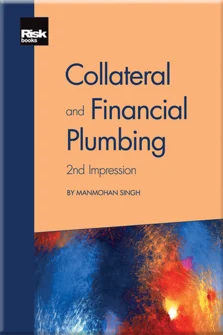Collateral and Monetary Policy
Collateral and Monetary Policy
Collateral in Financial Plumbing
Collateral Velocity
The Economics of Shadow Banking
Collateral and Monetary Policy
Money, Collateral and Safe Assets
Collateral and the OTC Derivatives Market
The Changing Collateral Space
The Collateral Infrastructures
The Sovereign–Bank Nexus via OTC Derivatives
When Financial Plumbing Breaks Down: An Example from Central Counterparties
Transmission of Monetary Policy Feds Lift-off and Collateral Reuse
Conclusion

This chapter deals with the relative prices of money and collateral as both contribute towards financial lubrication in the markets. With some central banks now a major player in the collateral markets, the larger the quantitative easing efforts, the longer these central banks will impact the collateral market and associated repo rate. This may have monetary-policy and financial-stability implications, since the repo rates map the financial landscape that straddles the banknon-bank nexus.
Introduction
Collateral is not integrated within the money or monetary-policy textbooks. Undergraduate macroeconomic textbooks still use the IS/LM (standing for investment, saving, liquidity preference and money supply) model as a construct to demonstrate the relationship between interest rates and real output in the goods-and-services market and the money market. In this model (see Figure 4.1), the intersection of the IS and LM curves is where there is simultaneous equilibrium in both markets. In the figure, the horizontal axis represents output, or real GDP, and is labelled Y. The vertical axis represents the real interest rate, i. Since this is a non-dynamic model, there is a one-to-one
Copyright Infopro Digital Limited. All rights reserved.
You may share this content using our article tools. Printing this content is for the sole use of the Authorised User (named subscriber), as outlined in our terms and conditions - https://www.infopro-insight.com/terms-conditions/insight-subscriptions/
If you would like to purchase additional rights please email info@risk.net
Copyright Infopro Digital Limited. All rights reserved.
You may share this content using our article tools. Copying this content is for the sole use of the Authorised User (named subscriber), as outlined in our terms and conditions - https://www.infopro-insight.com/terms-conditions/insight-subscriptions/
If you would like to purchase additional rights please email info@risk.net






